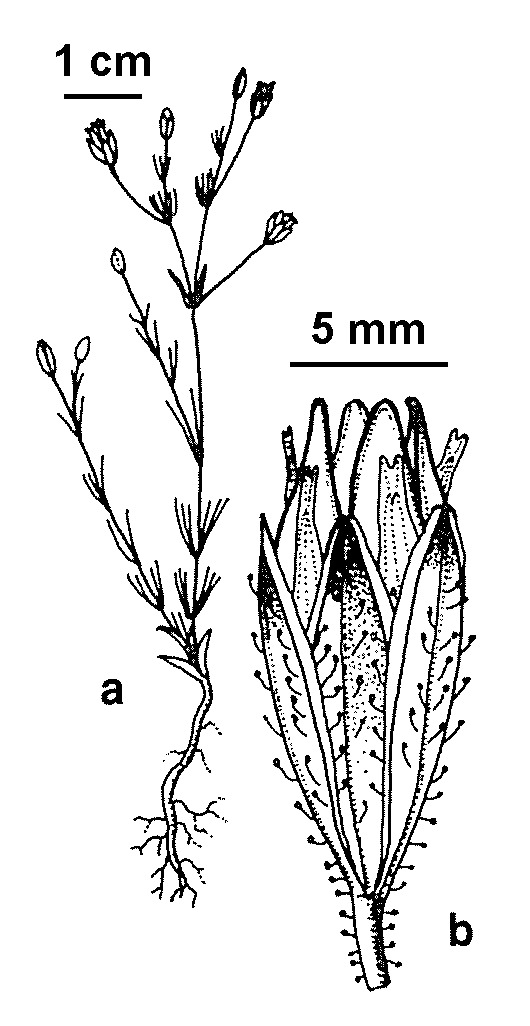Gypsophila tubulosa
(Jaub. & Spach) Boiss. ChalkwortAnnual; puberulent throughout and with long, glandular hairs mostly on the inflorescence. Stem erect, often branched from base, 5–20 cm high. Leaves sessile, linear-subulate, 5–15 mm long, 0.5–1 mm wide. Inflorescence loose, usually many-flowered; bracts herbaceous; pedicels erect or spreading, 5–15 mm long; calyx tubular-campanulate, 4–7 mm long, with prominent green veins, calyx-lobes very short, broad-ovate, obtuse to subacute; petals linear-cuneate, 5–9 mm long, entire, emarginate or bilobed, pink with 3 darker veins; styles 2. Capsule ovoid or conical, longer than calyx, c. 4–5 mm long; seeds black, rostellate, bluntly tuberculate, 0.5–0.8 mm long. Flowers Oct.–Mar.
LoM, MuM, Wim, VRiv, RobP, GipP, Gold, CVU, NIS, EGU, HSF, HNF, MonT, VAlp. Also naturalised WA, NT, SA, NSW, ACT, Tas. Native to Asia Minor. A widespread weed of disturbed, often sandy soils throughout extra-tropical Australia.
Australian populations show slight but constant morphological deviations from the typical form of the species and were described last century as an endemic taxon. These trivial differences, however, are readily accommodated within the phenetic variability of the species in Asia Minor.
Adams, L.G. (1996). Caryophyllaceae. In: Walsh, N.G.; Entwisle, T.J., Flora of Victoria Vol. 3, Dicotyledons Winteraceae to Myrtaceae, pp. 228–271. Inkata Press, Melbourne.
 Spinning
Spinning



